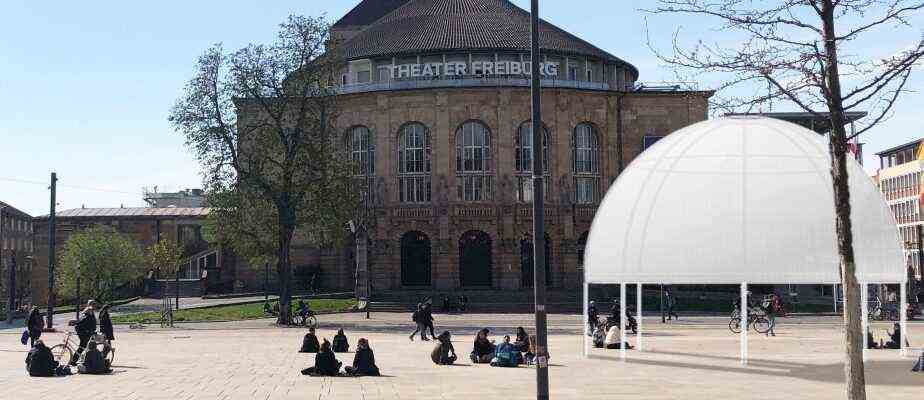Most wear them sensibly, some under their noses, others not at all: the mask is the accessory of the crisis. Joschka Kannen and Matthias Fehrenbach, two Freiburg architects, thought about what else one could do with her. How about, for example, a pavilion made up of 20,000 FFP2 masks glued together? The emotionally charged piece of fabric as a dome for a round tent, eight meters wide, six meters high.
The idea arose as part of the trinational Architecture Days, organized by the European Architecture House in Upper Rhine. This year’s topic: How can architecture show alternatives? If everything goes according to plan, the pavilion should first be in Freiburg, then later in Strasbourg. A stopover in Basel is also possible.
But why masks of all things? The two planners were particularly impressed by one number: According to a study in the specialist magazine, around 129 billion masks will be used worldwide every month during the pandemic Environmental and Science Technology from last year. Most of them end up in the trash at some point, others are kicked on sidewalks or in the subway. So why not turn a disposable item into a building material? That’s the idea. “The focus of our project is on the recycling aspect,” says Kannen. He could also imagine that FFP2 masks might even be useful as insulating materials because of their nature. But that still needs to be researched.
They already have 6,000 masks, but most of them are still missing
Joschka Kannen, 35, and Matthias Fehrenbach, 32, know each other from their studies in Karlsruhe. Kannen then worked in Paris and Brussels, Fehrenbach in Basel. Shortly before the first lockdown in 2020, the two architects started their own business together. “We don’t even know how to start without a pandemic. Corona has accompanied us from the start – and with it the mask.” One of their first projects in the joint office was the design of a care flat, including thoughts about air circulation and safety distances. Crisis architecture.
In addition to their usual assignments, they take care of the pavilion. Because it is a non-profit project, they first had to look for sponsors and people who could get them used masks. “We now have more than ten nursing services who collect masks for us, and then we also have a school.” Kannen and Fehrenbach started their search in the greater Freiburg area. Then word got around about what the two were up to.
Joschka Kannen estimates that they currently have around 6,000 masks. So there is still a lot missing. So that the roof is as stable as possible in the end, the masks are held together with a special two-component adhesive and plugged into one another based on the Black Forest shingle construction. A local company provides the adhesive.
In the beginning they tried it with a soldering iron, later with double-sided tape. All to no avail. “We didn’t want to staple or sew it either. The focus should be on the masks and not on a connecting element,” says Kannen. Before the two architects glue the masks together, they are washed by a Freiburg cleaning company that specializes in hygiene articles in hospitals. In addition to the usual white FFP2 models, the architects also get colorful masks again and again. It is still unclear how they will integrate them into the overall concept, perhaps as a colored pattern.
Little TÜV-tested, a lot of “learning by doing”
Joschka Kannen and Matthias Fehrenbach do not yet know for sure whether it will rain through the roof made of masks. The FFP2 masks are at least water-repellent, but Kannen also says: “It is difficult to assess whether the pavilion would withstand a long heavy rain.” It’s just an experiment, little TÜV-tested, a lot of “learning by doing”. For transport, the roof, consisting of eight parts, is placed on a kind of template and only assembled on site.
In Freiburg, the pavilion will then be on the square of the Old Synagogue in October, in the middle of the city. “A place for reflection and dialogue.” In the pavilion, for example, panel discussions could take place between nurses, students or cultural workers. Reflection rounds under a roof made of FFP2 masks. “With the pavilion we want to try to take a completely different look at the little piece of fabric,” says Joschka Kannen. “And with it the pandemic too.”
Hopefully the weather will be right, otherwise it could happen that caregivers and cultural workers find themselves in the rain again.

